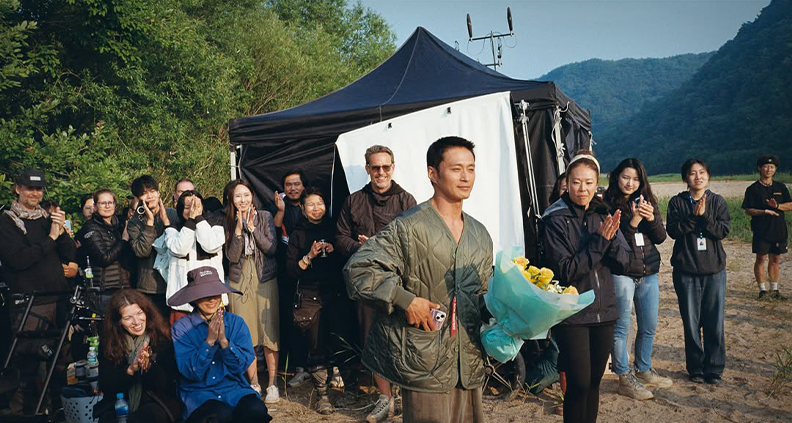How Project Involve Fellow Ante Cheng Brought an Indie Spirit to the Emmy Nominated Cinematography of ‘Pachinko’
It all started with a text from a friend that simply said ‘Congrats.’
“I was like, congrats for what?” recalled Ante Cheng. That’s how Cheng found out about his Emmy nomination for cinematography on AppleTV’s Pachinko. After it all sunk in, he recalled having some “happy tears.”
“It’s an honor to be recognized for the work my team and I have done. And Production Designer Ruth [Ammon] and her team was also nominated and recognized. It’s a great feeling”

Cheng had a history of working on indie projects as a cinematographer, including many with Pachinko season one director Justin Chon, but moving to a prestige streaming series was a step up for him “to learn quickly and adapt how to work at a bigger scale.”
Despite working with a larger crew, bigger set builds and shooting multicam, Cheng and Chon wanted to stay true to their indie roots.
“We approached it like how we would in with our previous movies, which kept it nimble because it was a very ambitious schedule. We’re trying to get scenes in dusk or sunrise in a very short amount of time,” he said.

When he returned for season two, he had more large-scale projects like Marvel’s Ironheart miniseries and another Justin Chon collaboration, Jamojaya. “I think I’ve grown and both, you know, as a DP and as a person quite a bit during those two projects…. the characters have grown, matured and so Soo [Hugh, showrunner] and I really wanted to elevate and refine the work.”
Rather than use different color grades to show the different time periods the show portrays, the creative team chose to lens the eras differently. “In the 80s, the height of economic boom in Japan, we used really aggressively tuned anamorphic lenses from Panavision. And on the other hand, in the 40s, during World War II, I was working with Zero Optic to rehouse some of my favorite Leica M lenses from the era… and for the 50s post-war rebuild, Dan Sasaki at Panavision tuned the spherical VA lenses for us.”
When it came to format, the team also was inspired by Japanese tatami-rooms, whose architecture mirrors the proportions of tatami mats. “We also tested a few different aspect ratios and we found the 2:1 could be fitting. And it happens to be the aspect ratio of tatamis… the proportions would line up perfectly if you’re in 2:1,” he said. “All [season 2] is now set in Japan. So there was a lot of tatami mats.”

Cheng, a 2018 Project Involve alum, credits the program for helping him build his career as he came out of grad school. (Project Involve is still going strong, getting a record number of applications for its 2026 program.)
“It was the perfect program to go into. I think the best part was that you’re in a small group of other fellows that are in the same stage of their careers as you,” he said. “We can group together, make a short film and have the masterclasses and mentorship. They are all invaluable.”
The community that he found with his other fellows was just as important. He went on to make many projects with Project Involve alums including the feature Death of Nintendo in from writer producer Valerie Martinez.
Up next for Cheng is a collaboration with another Film Independent Fellow, Bing Liu, on his first narrative feature Preparation for the Next Life, coming out this fall.
Film Independent promotes unique independent voices by helping filmmakers create and advance new work. To become a Member of Film Independent, just click here. To support us with a donation, click here.
Photos via Ante Cheng
More Film Independent…